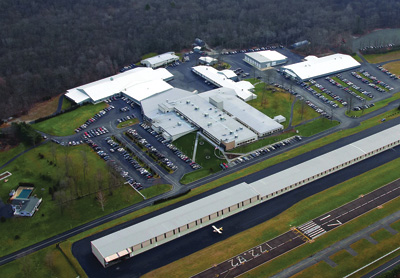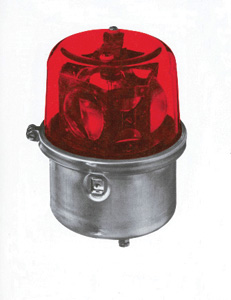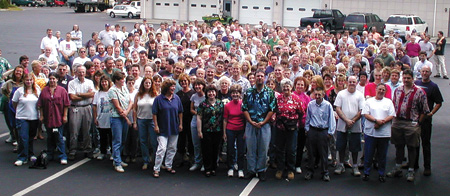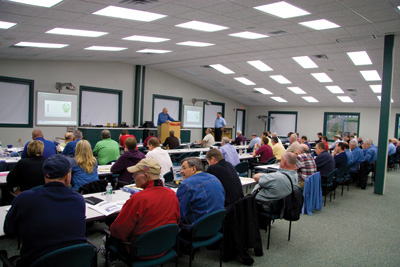Chris Mc Loone
This year marks Whelen Engineering Company’s 60th year in the emergency warning industry. When George Whelen built his first rotating beacon for aircraft in a tiny garage in Deep River, Connecticut, he surely did not envision two facilities totaling more 783,000 square feet between Connecticut and New Hampshire, plus a service and warehouse facility in England, and more than 1,200 employees armed with state-of-the art equipment and collective experience.
From that first aircraft beacon, which was adapted to a warning light to differentiate between a vehicle’s use as a hearse or an ambulance, Whelen’s goal has been to serve the public-first as an innovator of life-saving products, then as a fair and dedicated employer using American ingenuity and work ethic to compete amid increasing global competition. Today, the Whelen family and employees continue that tradition.
 |
| (1) This year marks Whelen Engineering Company’s 60th year in the emergency warning industry. Today, the company comprises two facilities totaling more 783,000 square feet and more than 1,200 employees armed with state-of-the art equipment and a solid background of experience. |
Whelen’s goal is to bring innovative, life-saving products to market more quickly while maintaining strict quality control throughout the process. It achieves this in the United States through a vertical manufacturing initiative; the use of robotics and state-of-the-art production equipment; and, perhaps most importantly, a motivated workforce. “Whelen is committed to United States manufacturing and is increasing its own capacity every day toward manufacturing all of its own needs within our factories in the United States,” says John Olson, president. This allows Whelen to meet and adapt to its customers’ changing needs in a short period of time.
Many Whelen employees are fire and emergency volunteers so they understand, firsthand, the need for effective, reliable warning products. From concept to design and testing, manufacturing, and quality control, all Whelen products are proudly made in America.
 |
| (2) George Whelen built his first rotating beacon for aircraft in a tiny garage in Deep River, Connecticut. That beacon was adapted to a warning light to differentiate between a vehicle’s use as a hearse or an ambulance. |
Equipment/Production Capability
Combining manufacturing processes such as surface-mount technology, transformer-winding machines, and hands-on inspection at every stage of the production process adds up to Whelen’s personal commitment to quality control and performance. Milling machines, CNC lathes, and screw machines make all the precision parts required for the company’s products. The injection-molding department uses robot-equipped machines for higher quality, increased safety, and shorter delivery times. Thirty-nine machines, from 35- to 2,000-ton capacity, produce 100 percent of the plastic components needed by the company. Robotic bending cells provide standalone operation for sheet metal parts. Adding equipment for hard coating of lenses and powder coating of housings in-house adds an extra step to Whelen’s stringent quality control program.
Nationally recognized certified test labs on site facilitate product development and shorten lead times. Whelen uses three photometric testing chambers and an acoustic anechoic sound chamber to test for environmental, dust, moisture, vibration, RF, and so on. These also allow Whelen to effectively test to industry certifications such as the Society of Automotive Engineers (SAE), the Automotive Manufacturers Equipment Compliance Agency (AMECA), and the Federal Aviation Administration (FAA).
The company’s engineering department employs more than 60 dedicated professionals and holds a plethora of patents on unique designs in optics, acoustics, electronics, and microprocessor technology.
Maintaining its position as leader in innovative, reliable product development also means a commitment to using the latest in computer technology, including 3D workstations.
In terms of the biggest advances in lighting for the fire service during Whelen’s 60 years, Olson says, “The development of LEDs to be used effectively as emergency warning devices was one of the biggest advances in lighting for the fire, police, and emergency services.”
 |
| (3) Whelen’s mantra is “quality throughout.” It supports this by heavily investing in modern technology, hiring and training the best employees, and supporting the education of students in the manufacturing sector. |
Fueling Manufacturing Resurgence
Whelen trains its sales and technical personnel at its factory training center, and they must return for updates on a regular basis. Whelen also offers a global network of factory-trained sales, technical service, installation, and repair services.
President of Whelen since the early 1970s, Olson recently was quoted in the New Hampshire Business Review saying what makes him angry is “passive acceptance that U.S. manufacturing is dying.” To fill the void for manufacturing talent in America, Olson has initiated hands-on programs at Whelen and other facilities to interest high school and middle school students in the many levels of manufacturing career opportunities. These programs have received national interest. “We work with several state universities including the University of New Hampshire and Central Connecticut State University, welcoming college students starting as freshmen for employment during the summer and offering an internship to college students in their junior year to work in our engineering department for a salary before returning to their regular college studies in their senior year,” says Olson. “A scholarship grant, upon the successful completion of the year of employment, will also help students in their final year.” The numerous job training, internship, and scholarship programs allow engineering students to spend a year on a paid assignment at the Whelen facility with real-life, hands-on experience.
 |
| (4) Whelen trains its sales and technical personnel at its factory training center, shown here, and they must return for updates on a regular basis. It also offers a global network of factory-trained sales, technical service, installation, and repair services. |
Whelen’s mantra is “quality throughout”-from research to design and production to service. Olson insists that manufacturing can enjoy a rebirth in the United States, and Whelen has supported this by investing in modern technology, hiring and training the best employees, and supporting the education of students in the manufacturing sector.
CHRIS Mc LOONE, associate editor of Fire Apparatus & Emergency Equipment, is a 19-year veteran of the fire service and a captain with Weldon Fire Company (Glenside, PA). He has been a writer and editor for more than 15 years. While with Fire Engineering, he contributed to the May 2006 issue, a Jesse H. Neal Award winner for its coverage of the Hurricane Katrina response and recovery.
Highlights of Six-Decade Leadership
• 1968-Strobe light technology brought affordable, reliable, and highly effective products to the light aircraft industry, then the automotive market.
• 1970s-Developed the all enclosed strobe lightbar, the 6000 Series, followed by the 8000 Series. Introduced totally electronic Outdoor Warning Voice and Siren System.
• 1983-Low-profile Edge9000® Lightbar, which, refined and updated, remains popular to this day.
• 1990s-Computer-networked vehicle warning systems, programmable warning equipment, and instant-operating diagnostics (Si-Test) for safer vehicle operation.
• 1996-LED technology introduced to market and quickly becomes the choice of law enforcement, emergency, fire, and DOT professionals for heavy-duty, low current draw and highly effective performance.
• 2000-Developing LED white light capability for reliable warning, scene lighting, work zone lighting, and ambulance compartments designed for better patient evaluation and treatment.
Products and Services
• LED, strobe and halogen warning lights, and sirens for law enforcement, emergency, rescue, and fire.
• Dedicated warning lights and systems for DOT, construction, off-road, and heavy-duty equipment.
• Industrial warning for manufacturing, chemical, municipal, and commercial applications.
• High-power voice and siren electronic warning for public warning.
• State-of-the-art aviation lighting.

